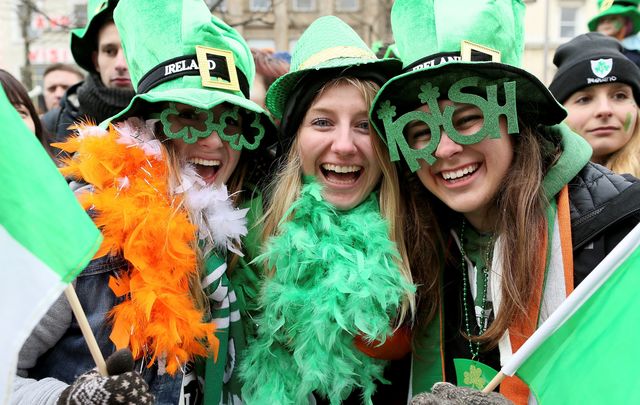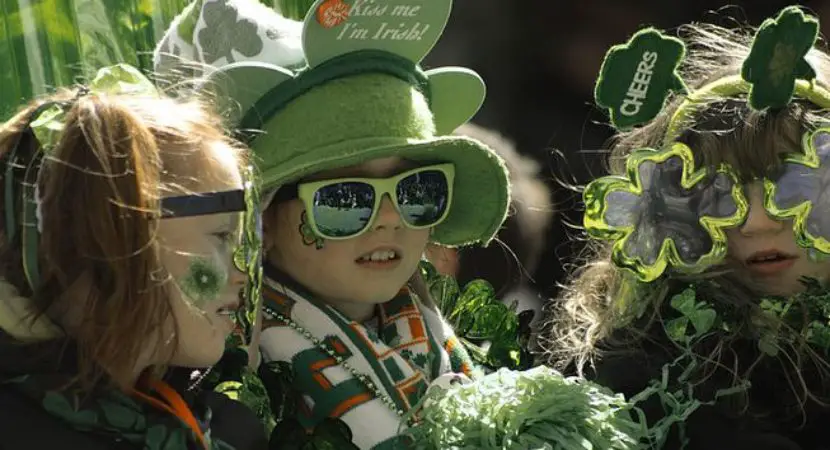We are fast approaching the season of sunshine and outdoor celebrations after months of being confined indoors. A familiar celebration to look forward to is St. Patrick’s Day.
This festivity done in honor of the patron saint of Ireland is thankfully not restricted to the Irish alone. March 17th, 2020, will see troops of people of various nationalities dress in green, feast on Irish food, and honor Irish culture.
I’m sure you’re looking forward to this festivity, so am I. As we prep for it, allow me to take you on a spin around five surprising facts about the celebrations of the holiday. Are you in for a ride? Sure, you’re!
What is St. Patrick’s Day?
Before we delve into the facts and discussions of St. Patrick’s Day, let’s remind ourselves what the celebration is all about.
Originally a religious festival, St Patrick’s Day is a celebration in honor of the patron saint of Ireland, as well as the arrival of Christianity in Ireland. Saint Patrick, on whose honor the feast is done, is not Irish. History placed his birth in Scotland and Wales before being sold into slavery to Ireland.
He went ahead to bring the Christian gospel to the Irish people who were then strictly pagans. Despite impediments on his missionary work, he gained the hearts of the Irish by incorporating the Irish pagan rituals in his teaching.
He paved a smooth transition from these rituals to Christian ceremonies. At his death on March 17, 461 AD, he had garnered quite a multitude of followers, and he was honored with the patron saint of Ireland.
Five surprising facts about St. Patrick’s Day
Now we have refreshed our memories of what the day is all about, let’s look at these five surprising facts about St. Patrick’s Day.
#1. Not Irish? You too can celebrate
St. Patrick’s Day is a global celebration, so if you were discouraged by the Irish tag associated with it, don’t be. You, too, can revel in the green festival.
In religious communities, St. Patrick’s Day is observed mostly by the Catholic Church, the Anglican Communion, the Eastern Orthodox Church, the Lutheran Church, and a host of others. Regardless, the festivities are not restricted to religious communities alone.
In 2019, the BBC reported that over 400 landmarks in more than 50 countries turned emerald in honor of the green day. Are you still worried about not being part of the festivities? Find yourself an Irish community near your location and be a part of something fun.

#2. Parades
Who wouldn’t want the chance to be out on the streets, soaking in the fresh air and sunshine? Throw in a good exercise, and you get all of these from a parade on St. Patrick’s Day.
Parades are one of the activities associated with St. Patrick’s Day. Old and young, local, and the elite come together to match in elaborate parades. Accompanying them are marching bands, bagpipe players, and other instrumental in adding zest to the long walks.
Usually, the parades are filled with charity organizations who often wish to replicate the benevolent history of St. Patrick.
Every March 17th, Dublin, Boston, New York, Philadelphia, New Orleans, Savannah, Chicago, and a host of other cities, have elaborate displays of parades. Naturally, these cities have a large number of Irish settlers. The fun is, however, not for the Irish alone.
#3. Green Everyone?
Though the attributed color for St. Patrick’s Day was originally blue, it has since transferred to green. It’s believed that the transition to green came about because of Ireland’s nickname “The Emerald Isle,” the green in the Irish flag and the shamrock, or clover.
On this day, it is customary to wear green items of clothing and accessories. Others paint their body parts green or go under green mascots.
One of the significances of the green color is its religious symbolism. St. Patrick adopted green shamrocks to teach people about the Holy Trinity (God the Father, God the Son, and God the Holy Spirit).
Again, Irish folklore has it that wearing green would make you invisible to leprechauns, creepy, magical men. And if you didn’t wear green, a fairy or leprechaun might pinch you. Nowadays, people pinch each other who aren’t on green because of the legend
In honor of the green color, Chicago usually dyes its river green. It takes about 40 pounds of eco-friendly vegetable dye to achieve the green color of the Chicago River, which lasts for about 5 hours. At bars, green-dyed beers are regular. You should join in the buzz by displaying the bold color on March 17th, 2020.
#4. Shamrocks on St. Patrick’s Day
I knew you would ask. As famous Irish legends have it, St. Patrick used the Shamrock to illustrate the holy trinity of Christian doctrine, (Father, Son, and Holy Spirit) during his mission in Ireland.
The Shamrock is a three-leaved plant that looks very much like the clover. It also happens to be the national emblem/flower of Ireland. Today we see people celebrating St. Patrick’s Day garbed in green costumes and shamrocks.
#5. Foods on St. Patrick’s Day
The traditional food for St. Patrick’s Day is corned beef with potatoes and cabbage. This staple seemingly originated between 1845 and 1852 during the Irish potato famine. Irish immigrants to the United States who were poor and discriminated against found solace in eating corned beef simmered with cabbage and or potatoes.
Also, there are often requests for lime green chrysanthemums and Irish soda bread. However, others celebrate with an Irish breakfast consisting of sausage, black and white pudding, fried eggs, and grilled tomatoes.
Conclusion
There you have it. March 17 is fast approaching and, I bet nothing is going to have you gawking this time at the festivity. Let’s start getting green already.

